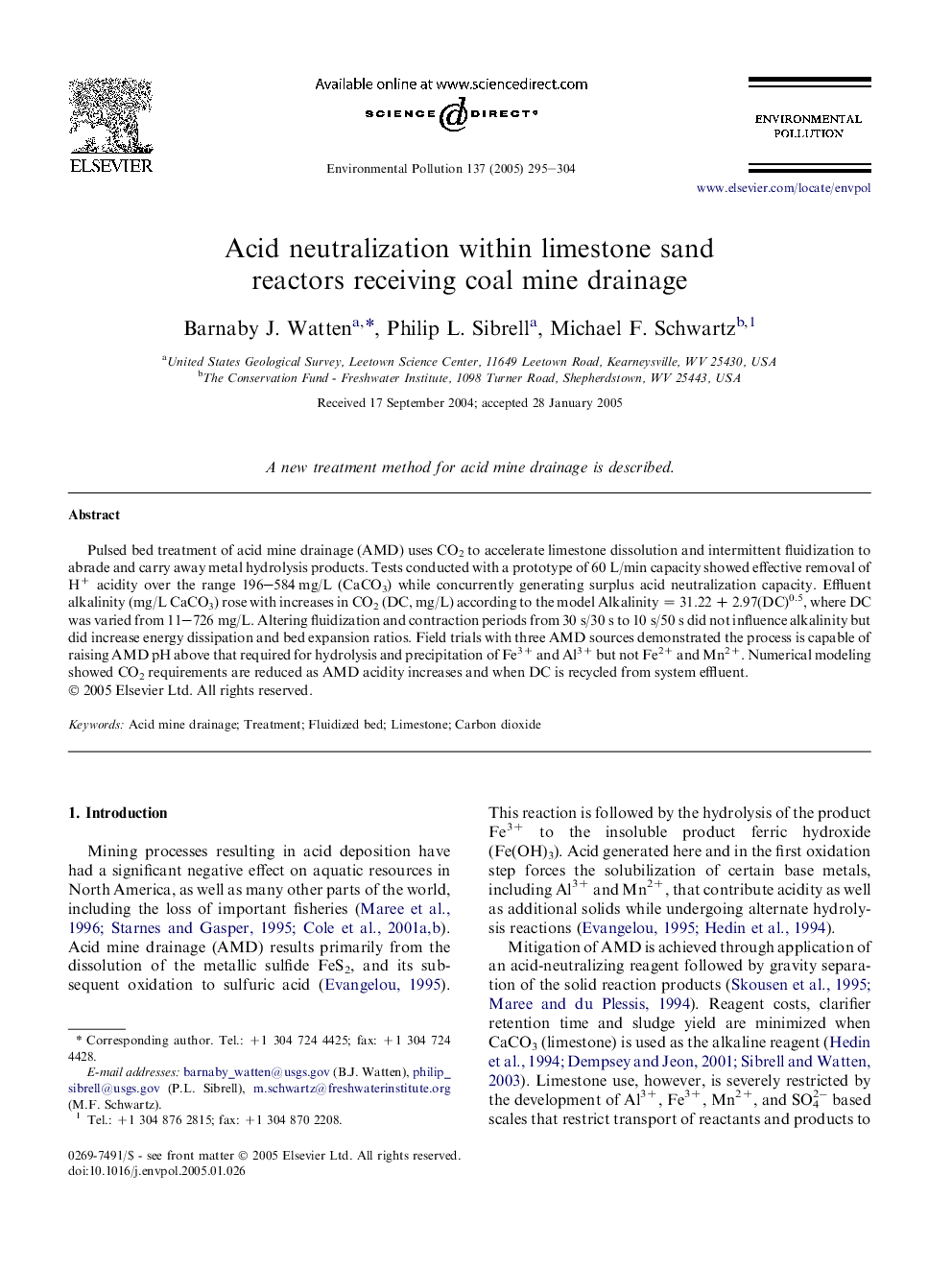| Article ID | Journal | Published Year | Pages | File Type |
|---|---|---|---|---|
| 9456206 | Environmental Pollution | 2005 | 10 Pages |
Abstract
Pulsed bed treatment of acid mine drainage (AMD) uses CO2 to accelerate limestone dissolution and intermittent fluidization to abrade and carry away metal hydrolysis products. Tests conducted with a prototype of 60 L/min capacity showed effective removal of H+ acidity over the range 196-584 mg/L (CaCO3) while concurrently generating surplus acid neutralization capacity. Effluent alkalinity (mg/L CaCO3) rose with increases in CO2 (DC, mg/L) according to the model Alkalinity = 31.22 + 2.97(DC)0.5, where DC was varied from 11-726 mg/L. Altering fluidization and contraction periods from 30 s/30 s to 10 s/50 s did not influence alkalinity but did increase energy dissipation and bed expansion ratios. Field trials with three AMD sources demonstrated the process is capable of raising AMD pH above that required for hydrolysis and precipitation of Fe3+ and Al3+ but not Fe2+ and Mn2+. Numerical modeling showed CO2 requirements are reduced as AMD acidity increases and when DC is recycled from system effluent.
Related Topics
Life Sciences
Environmental Science
Environmental Chemistry
Authors
Barnaby J. Watten, Philip L. Sibrell, Michael F. Schwartz,
